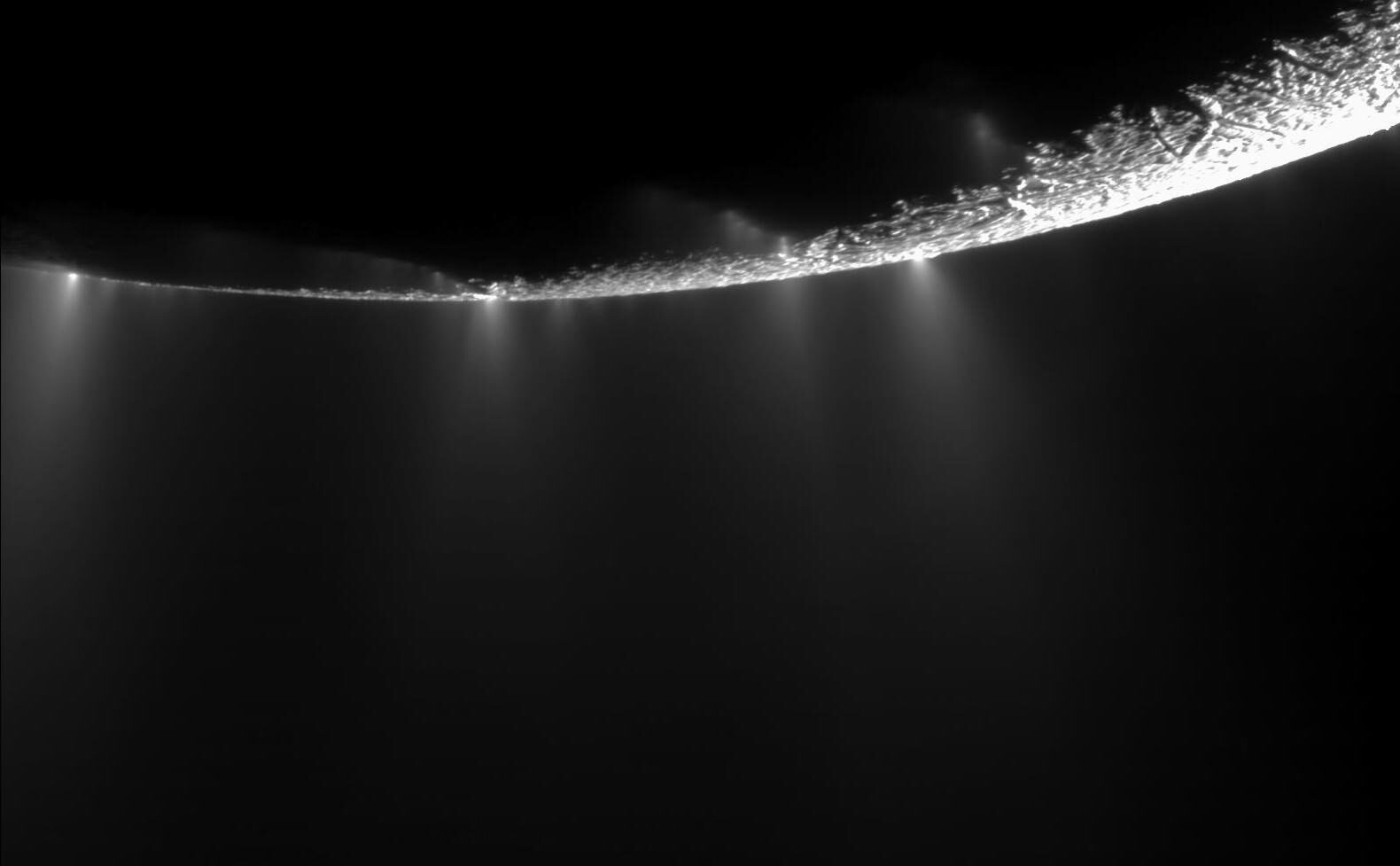Enceladus: The Leaky Moon With Tiger Stripes
For those not particularly interested in astronomy (how could you not be?), Enceladus is a small icy moon that orbits the gas giant, Saturn. It’s not exactly somewhere we could ever settle, as it’s colder than liquid nitrogen, even in the summer and has very little gravity. But, one thing that excites us about Enceladus is the fact that beneath the icy surface lies a liquid water ocean.
 Size Comparison – Wikipedia
Size Comparison – Wikipedia
The tiger stripes are hundreds of kilometers long, a few kilometers wide and they’re jagged and cracked. Sometimes, the contents below, consisting of gas, water, ice and organic compounds will escape through small cracks and holes, and into space where we can examine it. This is what is getting the attention of astronomers lately, as it could hold the key to finding life outside of Earth.
Enceladus is not longer than Great Britain
Enceladus isn’t the only moon thought to have an ocean lurking beneath its cold surface, as Europa and others also have water. But, Enceladus is, so far, the only place we can confirm the existence of hydrothermal vents spewing out hydrogen gas. On Earth, microbes thrive in this environment and if given enough time, can evolve into a full ecosystem.

Cassini arrived in the neighborhood of Saturn in 2005 and has given us an unprecedented look at the area and its inhabitants. It stumbled upon the tiger strips, named so because it looks as though a set of claws have raked the surface, allowing us to peek inside.
Future tourism location?
“Confirmation that the chemical energy for life exists within the ocean of a small moon of Saturn is an important milestone in our search for habitable worlds beyond Earth. Although we can’t detect life yet, we’ve found that there’s a food source there for it. It would be like a candy store for microbes,”said Linda Spilker, Cassini project scientist at NASA’s Jet Propulsion Laboratory (JPL) in Pasadena, California.
Cassini found that the tiger stripes were the warmest location of any of Saturn’s moons, or least cold we should say. A lander could visit one day, but it wouldn’t be a very hospitable voyage if humans went along. If a lander did visit this region, and burrowed down into the ice, it would find caverns filled with high pressure water vapor. If it burrowed further still, it would reach the haloed ocean. Cassini has been instrumental in deciphering what is going on beneath the surface of Enceladus, and astronomers think they have it all figured out. Dione, a neighboring moon of, pushes the orbit of Enceladus into an ellipse. Heavy gravitational tides also act strongly on Enceladus, both ensuring the circular path and heating up the interior of the moon.
Mysteries Remain
There are still some mysteries we haven’t answered about everyone’s favourite new moon. First and foremost, we don’t know if life exists beneath the surface; it’s entirely possible if these circumstances have been around for enough time. Secondly, the fractures that the plumes escape from should freeze shut in a short period of time but these that we are studying now have been open for more than fifty years.

We are also seeing fewer and fewer plumes and we are not sure why. They are now half as frequent as they were when Cassini arrived. We expect this to be a seasonal drop in volume, but we don’t know when they will start to increase again. Time is of the essence for Cassini, as the spacecraft that has captured the imagination of astronomy lovers across the world is almost out of fuel. Without the fuel, it won’t be able to make necessary course adjustments and stop itself from crash-landing somewhere. To avoid any possible contamination of places like Enceladus, NASA have decided to spectacularly crash the probe into Saturn’s surface.





